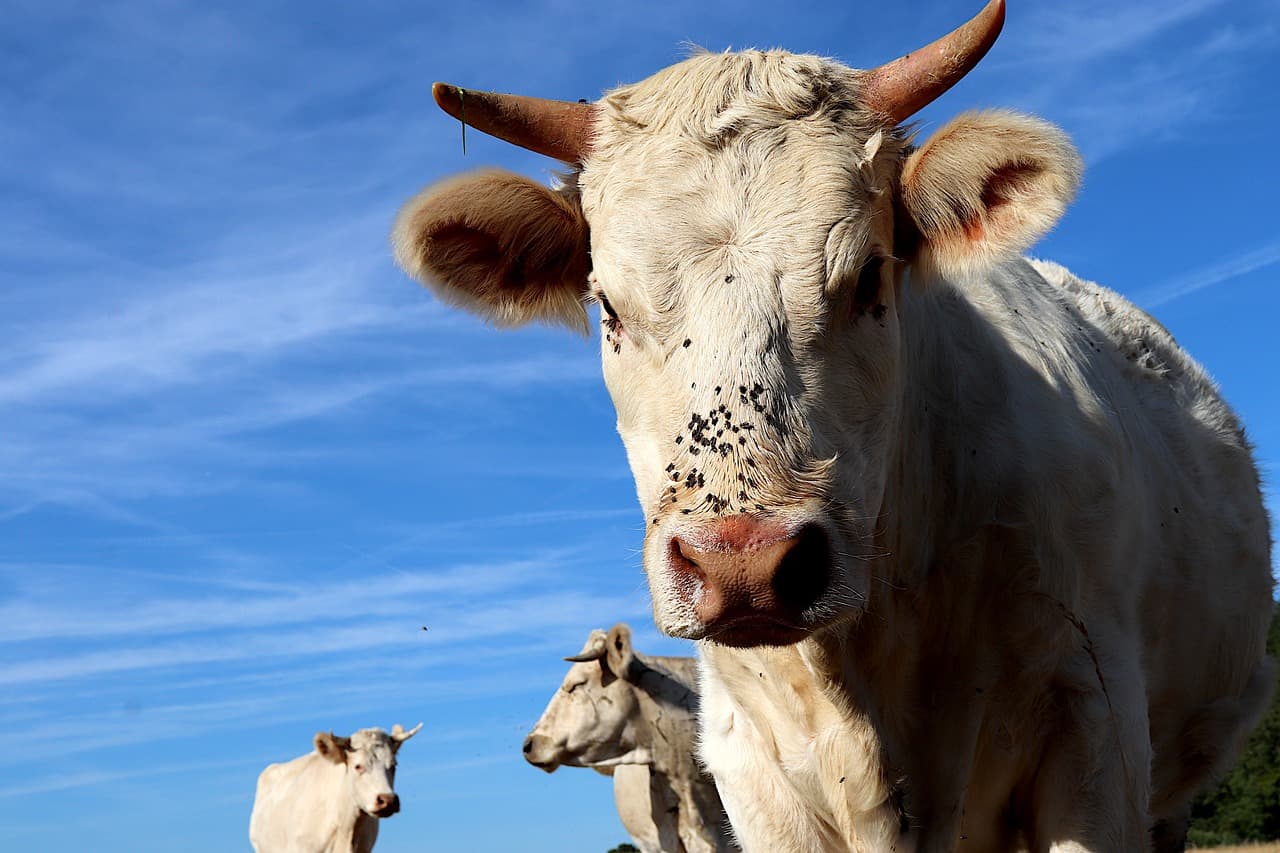Last Updated on January 22, 2025 by Alice Benny
There are several good reasons fly control for cattle is important. Flies are pests that are not only bothersome to both cattle and humans but actually carry diseases. Biting flies can carry a multitude of diseases for cattle, such as bovine leucosis virus and anaplasmosis.
The worst part is that different flies carry different kinds of diseases. Face flies spread Moraxella Bovis, which has been known to cause pinkeye in cattle, while relentless bites from horn flies can cause an incredible amount of economic losses to the farmer or producer.
As a cattle farmer, your best course of action is to find effective fly control methods for cattle. This isn’t as easy as it might at first sound. Flies have been around for millions of years and have adapted to their environment, giving them an edge on almost any method you may think of using.
Therefore, completely getting rid of cow flies won’t be possible. However, you can find excellent and effective fly control methods that will at least minimize the nuisance and losses that these pests can cause. Let’s take a quick look at some of the best methods for fly control. We also explain different kinds of flies that bother cattle.
Fly Control for Cattle
It’s best to consider your situation before developing a fly control method or strategy. There are different factors to consider, including if the cows are dealing with flies in the barn or pasture. More on this below. Consider the following:
- The pasture size
- How many cows you own
- Fly population
- Prevalent fly type
These factors all play a big role in how effective the chosen strategy will be. Certain cattle fly control methods simply won’t work under certain conditions.
That said, a few go-to cattle fly control methods have proven effective over the years. These include:
Insecticides
There are two main types of insecticides:
- Cattle fly sprays
- Pour-ons
Sprays are applied to the animal’s entire body, while pour-ons are applied to their backs. These insecticides can be quite effective in fly control, but only for a limited amount of time.
You must apply these insecticides several times during fly season to effectively control fly infestations. While pour-ons last for several weeks, sprays only last a few days, and as such, easy access to the livestock is necessary if you use this cattle fly control method.
You can find cattle fly sprays and pour ons at Farm & Fleet, Tractor Supply Company, Home Depot, Walmart, Amazon and stores that sell tack and vet supplies.
Fly-Control Ear Tags
Insecticide cattle ear tags are some of the most widely used fly control methods today. While each one has its own special brand of chemical combination, they are mostly quite effective against a wide variety of adult flies.
This fly control method is best used by farmers whose cattle graze over wide pastures and aren’t often near any working facilities for long periods. The fly tags can be applied during the branding and vaccinating period and will typically remain mostly effective throughout the summer months.
The problem with cattle ear fly tags is that they tend to lose effectiveness whenever they are exposed to rain or as the season progresses. Rotating fly tag brands each season is advisable to avoid insect resistance.
You can find insecticide cattle ear tags at Blain’s Farm & Fleet, Tractor Supply Co, and livestock and pet supply centers as well as other retailers.
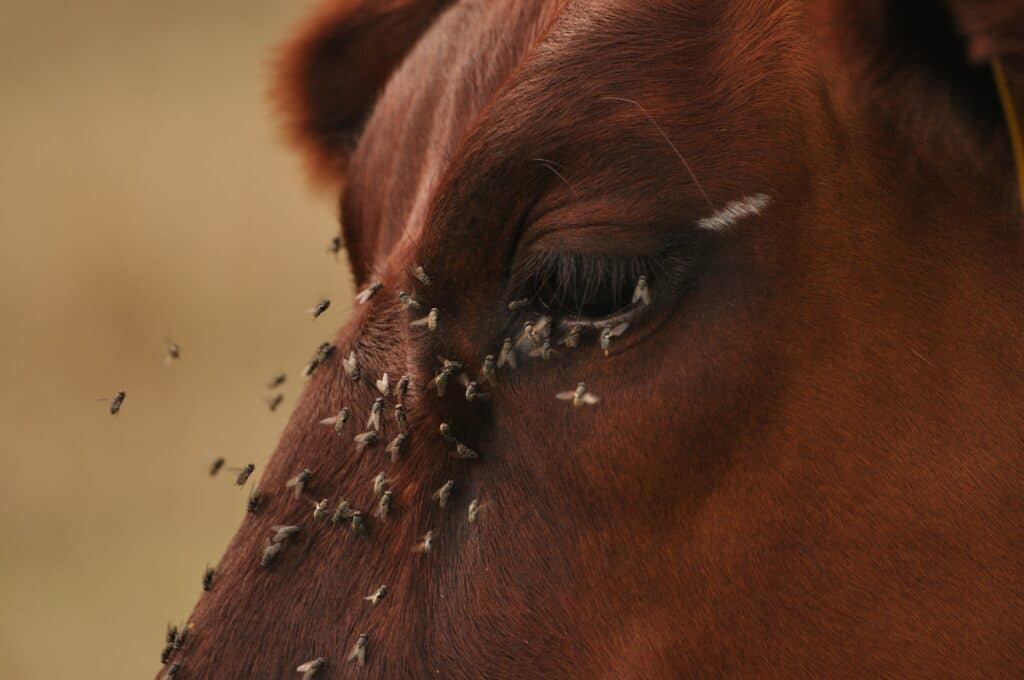
Dust Bags or Back Rubbers for Cow Flies
One of the best ways to control flies is to place pesticide-treated dust bags and back rubbers strategically where the cattle can find them. Whenever a cow or calf is overwhelmed by the fly infestation on its body, it can use these dust bags to get rid of them while getting some of that pesticide on its hide.
This method is best used in systems where the cattle are sure to come into contact with the dust bags. You can place them near watering holes, a fence, or a gate.
Feed Throughs
Another way to keep flies away from cows and calves is through feed throughs. This is food that’s fed to the cattle via blocks, tubs, and feed supplements. The food has medicine in it that is safe for cows but not for flies. When the cows digest it, the medicine goes into their manure.
Flies often lay their eggs in piles of manure. With the medicine from the feed throughs, the fly eggs aren’t able to grow properly. The result is fewer flies.
This can be an effective fly control method to limit future fly populations. However, a downside is to continue working, the cows need to keep eating this type of food. It’s also more expensive than the other fly control methods.
Using more than one method can help reduce flies from bothering cows.
Left unchecked, fly infestations can negatively affect the productivity of both beef and dairy cattle. The fly control methods highlighted here are effective, but only for a limited period and in specific circumstances. It’s imperative to find one that works best for your specific circumstance.
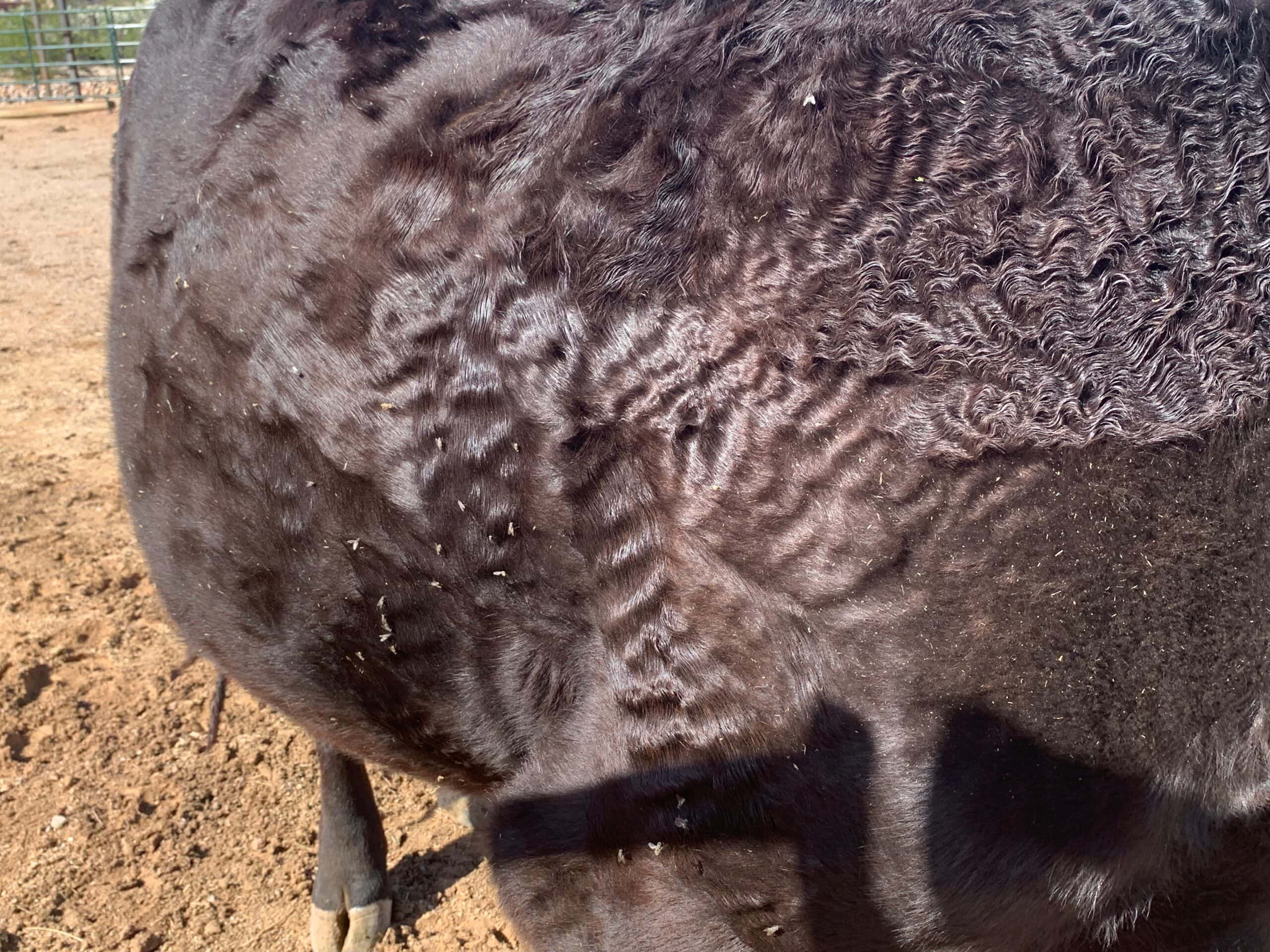
Common Fly Pests on Cattle
Before deciding on the best way to control flies around cattle, it is best to familiarize ourselves with the different kinds of flies. As with most things, there’s hardly a one-size-fits-all approach to fly control.
For the most part, the cow flies you will have to deal with have a lot to do with the environment where your cattle graze and live. There are two main types of environments:
- Barns: Here, you will most likely be dealing with stable flies and house flies.
- Pasture: When using a pasture system, you will likely encounter a wider variety of flies, including horse flies, face flies, deer flies, and horn flies.
Common Types of Barn Flies for Cattle
With that in mind, here are the most common types of flies that hound cattle.
House Flies
These tend to be common in the summer. There are a few conditions that make it easy for house flies to breed:
- Manure piles
- Decaying silage
- Animal droppings
- Beddings
- Spilled feed
They also tend to breed in other organic matter, and it takes them about 10 days to grow, become adults, and start reproducing little flies of their own. In most cases, female houseflies live for 10–30 days.
Within that period, a single female housefly can produce anything from 150 to 200 eggs. These flies are often spotted in the summer, and even though they don’t bite, they can spread parasites and diseases among cattle.
Adult houseflies consume the blood, sweat, tears, saliva, and other secretions of animals. In response to house flies, cows exhibit behaviors like flapping their ears, shaking their heads, and avoiding certain areas.
Stable Flies
Stable flies also tend to breed in decaying vegetation as well as:
- Wet straw
- Spilled feed
- Manure
- Grass clippings
- Decaying silage
These flies take around 21 days to mature and start reproducing. Female stable flies tend to live between 20 and 30 days, and in that time, they can produce around 200-300 eggs. One of the main reasons these flies are so destructive is that they feed on cows’ blood.
They can feed on around two drops every day, which has a tremendously negative impact on production. Stable flies are more prevalent during summer and localize around the cows’ legs and belly.
Stable flies are notorious for their excruciating bites. Animals afflicted by them often resort to behaviors such as constant leg stomping and clustering in groups. This distraction makes them allocate less time to vital activities like eating and drinking.
In environments like feedlots and dairies, stable flies can be particularly detrimental. These pests can reduce the weight gain of cattle by up to 0.48 pounds daily. Such effects might require beef cattle to stay on feed for an additional 30 days, depending on the circumstances.
Even a seemingly minor infestation, with as few as 5 stable flies on a cow’s foreleg, can lead to significant economic setbacks in feedlot settings.
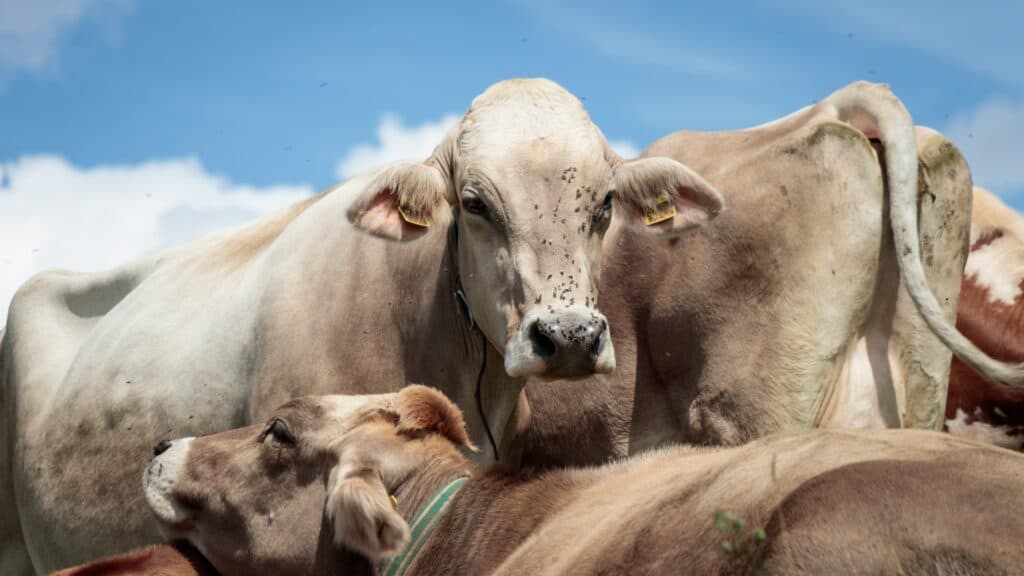
Common Types of Pasture Flies for Cattle
Cattle managed using the pasture system are a little more susceptible to flies than cows under the barn system. This is mostly because there are many more different types of flies associated with this system.
Horn Flies
Horn flies are a real nuisance to cattle and can affect a rancher’s bottom line. Horn flies can feed on 20 or more blood meals every day. They tend to go for the cattle’s shoulders, backs, and sides when it’s reasonably warm.
They relocate to the cow’s underside and belly when it gets extremely hot. They mature to a reproductive age within 10 – 20 days.
Horn fly females like to lay their eggs in fresh droppings. These flies can survive harsh winters in dung packs and resume their lifecycles when it gets warmer.
Horn flies tend to reduce weight gain, decrease milk production, and cause blood loss and fatigue in cattle.
The feeding habits of horn flies affect cows negatively in many ways. Flies lead to discomfort, loss of blood, inefficient grazing, lesser weight accumulation, and a drop in milk yield in dairy cows. They are also associated with transmitting summer mastitis.
Face Flies
While face flies are non-biting flies, they can spread disease within the herd. These flies tend to linger around the cows’ faces and eyes. They are known to spread diseases such as eye worms and pinkeye.
Even though these flies don’t bite, they still feed on blood that other biting flies leave over. They have a 2 – 3 week lifecycle and are hardy enough to travel several miles to find a suitable host.
These flies don’t typically enter barns during the summer but have been known to find shelter in them during the winter months. The males don’t swarm livestock faces while the females lay their eggs in fresh manure.
Horse and Deer Flies
Combined, these flies have around 300 different individual species that can inflict an incredible amount of pain and nuisance on cattle. Not only do they feast on livestock blood meals, but they leave blood pools behind, which, in turn, attract face flies. An infestation of horse and deer flies can lead to:
- Fatigue
- Decreased milk production
- Weight loss or decreased weight gain
- Blood loss
- Extreme annoyance
These flies have also been linked to the spread of diseases such as:
- Anthrax
- Tularemia
- Leucosis
- Anaplasmosis
Females from both species tend to lay eggs near ponds, streams, marshes, and poorly drained pastures, where the offspring take around two years to mature. When it comes to these kinds of flies, the best remedy is to simply stop grazing your cattle around wet regions.
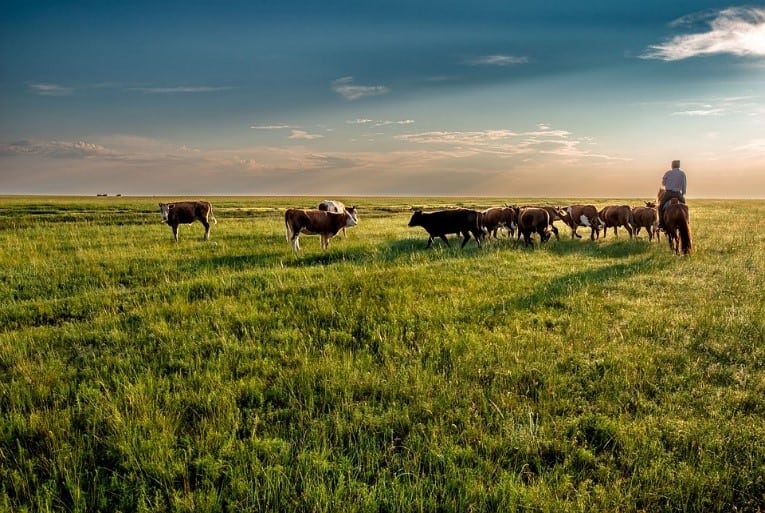
Best Fly Control for Cattle
Fly protection for cows is essential for their health and productivity. Flies are vectors for various diseases and pathogens that can adversely affect cattle. Their bites cause discomfort, leading to stress and reduced weight gain in beef cattle or decreased milk production in dairy cattle.
By implementing effective fly protection measures, farmers can help ensure their herds’ well-being. This can help with productivity and economic return.
If flies are bothering your cattle, it’s time to take action. Part of caring for livestock properly is keeping the animals comfortable. There are many ways to control flies on cattle.
Learn about different cattle breeds and which might be good to add to your farm or homestead. Consider raising Belgian Blue cattle, Shorthorn cattle, mini milking cows, Brown Swiss cattle, Limousin cattle, and more.
Keep reading to learn about:
Featured image of flies on cattle: Jacques Gaimard, Pixabay

